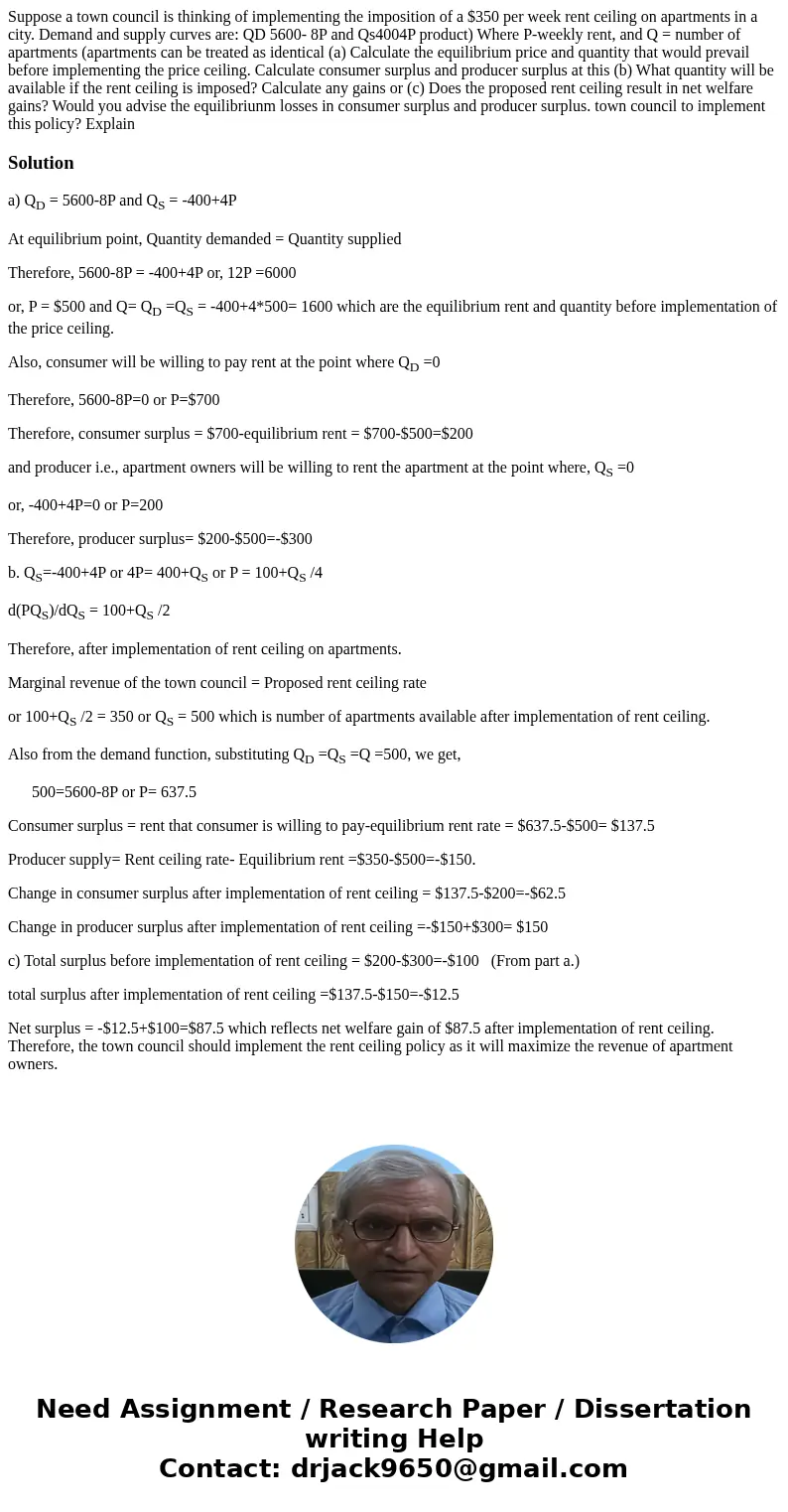Suppose a town council is thinking of implementing the impos
Solution
a) QD = 5600-8P and QS = -400+4P
At equilibrium point, Quantity demanded = Quantity supplied
Therefore, 5600-8P = -400+4P or, 12P =6000
or, P = $500 and Q= QD =QS = -400+4*500= 1600 which are the equilibrium rent and quantity before implementation of the price ceiling.
Also, consumer will be willing to pay rent at the point where QD =0
Therefore, 5600-8P=0 or P=$700
Therefore, consumer surplus = $700-equilibrium rent = $700-$500=$200
and producer i.e., apartment owners will be willing to rent the apartment at the point where, QS =0
or, -400+4P=0 or P=200
Therefore, producer surplus= $200-$500=-$300
b. QS=-400+4P or 4P= 400+QS or P = 100+QS /4
d(PQS)/dQS = 100+QS /2
Therefore, after implementation of rent ceiling on apartments.
Marginal revenue of the town council = Proposed rent ceiling rate
or 100+QS /2 = 350 or QS = 500 which is number of apartments available after implementation of rent ceiling.
Also from the demand function, substituting QD =QS =Q =500, we get,
500=5600-8P or P= 637.5
Consumer surplus = rent that consumer is willing to pay-equilibrium rent rate = $637.5-$500= $137.5
Producer supply= Rent ceiling rate- Equilibrium rent =$350-$500=-$150.
Change in consumer surplus after implementation of rent ceiling = $137.5-$200=-$62.5
Change in producer surplus after implementation of rent ceiling =-$150+$300= $150
c) Total surplus before implementation of rent ceiling = $200-$300=-$100 (From part a.)
total surplus after implementation of rent ceiling =$137.5-$150=-$12.5
Net surplus = -$12.5+$100=$87.5 which reflects net welfare gain of $87.5 after implementation of rent ceiling. Therefore, the town council should implement the rent ceiling policy as it will maximize the revenue of apartment owners.

 Homework Sourse
Homework Sourse